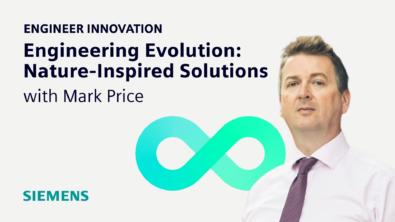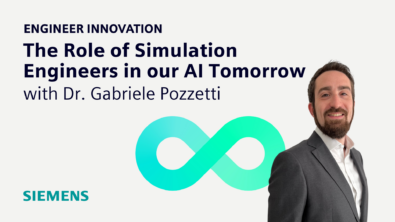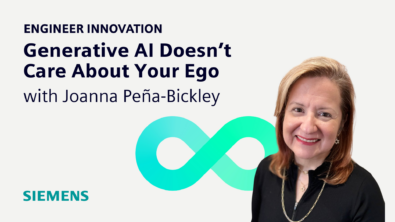Rethinking fuel for industrial thermal systems with Guy de Carufel and Eric Duplain (Series 2 Episode 2)
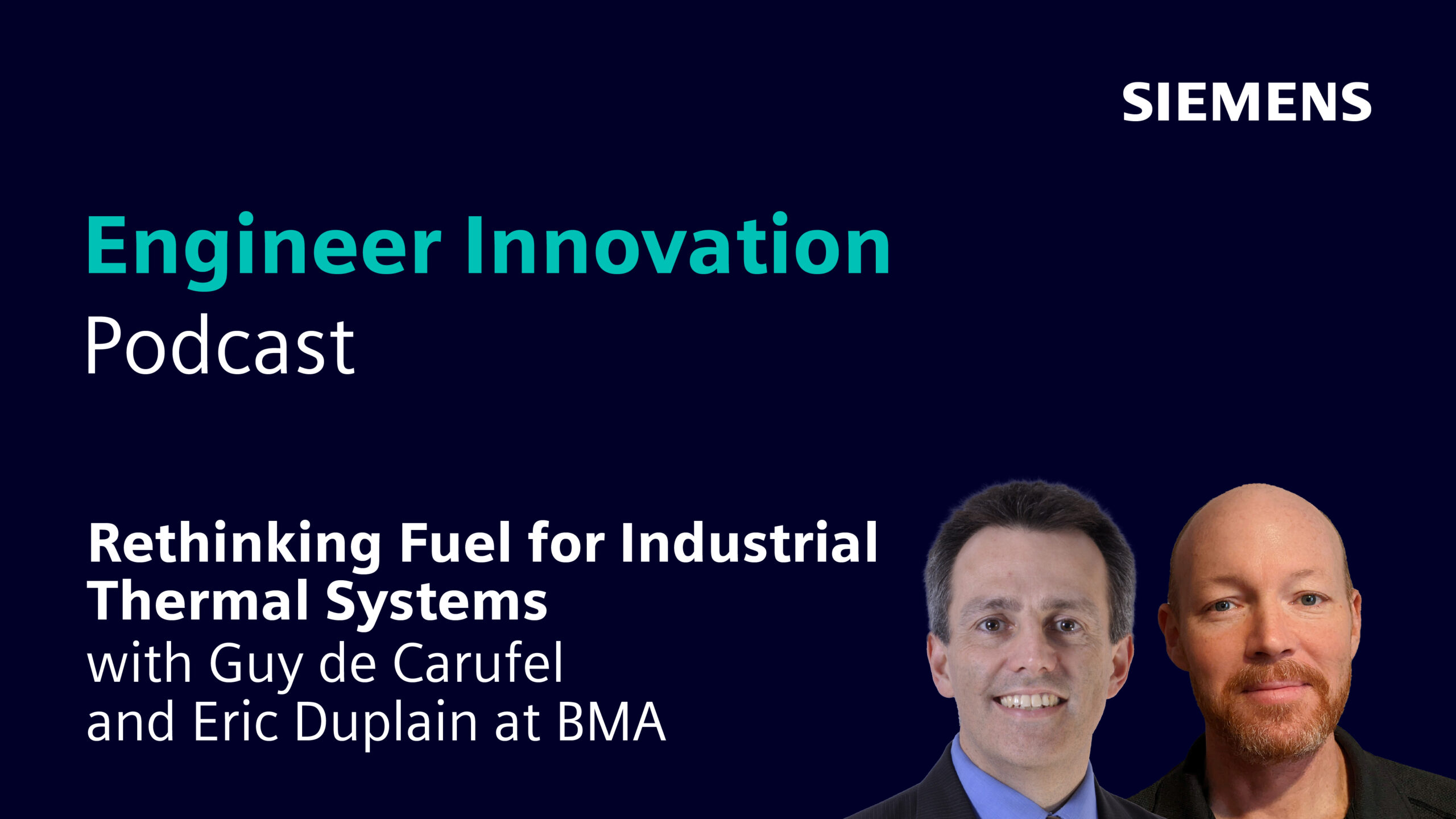
First, there was fire
Throughout history, fire has played a crucial role in human survival and comfort. From providing warmth and light to cooking food and offering protection, fire has been a valuable tool. Expanding our understanding and usage of combustion has become an essential driver for the industrial revolution.
Specifically, I am referring to smelters, furnaces, and boilers. Without these, our modern society would essentially collapse. Because without them, it would be nearly impossible to continue processing and manufacturing many components, materials, and products we depend on.
Then, there was smoke
Reaching the required temperatures of over 1000 degrees C, necessary for most of these systems and processes, has been achieved in one reliable fashion: burning fossil fuels. This has only increased our reliance on them, which releases tons and tons of harmful greenhouse gases into our atmosphere yearly.
There is a pressing need for a cleaner and more sustainable future. The question is, how?
Thankfully, leading experts like Guy de Carufel and Eric Duplain, from Brais, Malouin & Associates understand this challenge and want to lead the way to a better future. They are committed to helping their clients improve their energy efficiency and transition to cleaner alternative fuels.
We want progress. But what comes first is the earth, we need to reduce carbon emissions and it needs to be sustainable. That’s not up for debate. We are aware of that. But with our knowledge and our experience … we think we can make a difference.
Eric Duplain
In this episode of the Engineer Innovation podcast, we talk about what the future of industrial thermal systems looks like, including how to reduce carbon emissions in the near term, some of the fuels that are most likely to replace traditional energy sources in the longer term and the challenges ahead in doing so.
-
What the future of industrial thermal systems looks like
-
Including how to reduce carbon emissions in the near term,
-
Some of the fuels that are most likely to replace traditional energy sources in the longer term
-
The challenges ahead
Chad Ghalamzan 00:12
Welcome to The Engineer Innovation podcast powered by Simcenter. This podcast is a show by engineers for engineers, in which we explore how engineering simulation and tests are contributing to a healthier, happier and more sustainable future. Our guests bring in-depth knowledge of their specialty, and we have engaging conversations about the past, present and future of engineering. My name is Chad Ghalamzan. In today’s episode I’m speaking with Guy de Carufel and Eric Duplain from Brais, Malouin and Associates about industrial thermal systems and the challenges they face in reducing carbon emissions and energy consumption. Industrial thermal systems like process heating and boilers consume a lot of energy. And that means a lot of carbon emissions are released as well. What’s the impact of all that? Is that the future of their industry? Today I have two gentlemen from BMA to talk about this and the impact they believe their work has on reducing carbon emissions. Eric and Guy, welcome to the show. Would you like to introduce yourselves and BMA?
Eric Duplain 01:19
Yep, my name is Eric Duplain from BMA. I’ve been with this company for 16 years. I’m an engineer, and my specialty is numerical simulation, we do the simulation of combustion system and other transfer equipment. I also like to do field work. So it’s a good opportunity to see the effect of what you simulate in real life and kind of measure the impacts.
Guy de Carufel 01:43
I’m Guy de Carufel and I’ve been with BMA for close to 20 years, currently director of operations there. So I oversee all the engineers, all the projects, yes. So we’ve been working with large industries that use a lot of energy in their processes for many, many years. Our goal is to help them reduce their emissions and improve their efficiency and be greener.
Chad Ghalamzan 02:04
So you work with customers involved with every type of industrial thermal systems, can you give us an idea of what that scope is, what the different type of systems you guys are involved with?
Guy de Carufel 02:15
Yeah, so we’re working with like all types of industries that are very energy intensive. So it goes from petrochemicals, mines and metals, paper mills, any industry that uses combustion, or very high temperature processes to produce what they’re selling to the market. So oil and gas, like refineries, paper mills, mines, where they extract minerals, foundries where they smelt and all that kind of… so any place where there’s very energy intensive activity going on, except electricity, so we don’t touch electricity. So basically, we focus a lot on combustion, burning carbohydrates to produce heat. And obviously, that emits a lot of greenhouse gases. And we have to solve that going forward. And we are there to help our customers do a transition towards a greener future.
Chad Ghalamzan 03:09
So indiscriminate of what industry they’re in, it’s the same type of system that you’re pretty much talking about. There’s no big variation between smelting and paper, and pulp, for example.
Guy de Carufel 03:20
There’s quite a bit of difference between the different industries. So two great categories are, so there’s boilers, where you burn a fuel to produce steam, or hot water or any other thermal switch, this is a large category, and the other one is more furnace type where the heat is injected directly into the process, like a smelter or kiln, the heat goes straight into the products, basically, a boiler is through steam to use somewhere else in the system. So it’s kind of two broad categories.
Eric Duplain 03:49
The common point to these two categories is that the physics is the same for the combustion system. So this is why our knowledge applies to all the above.
Chad Ghalamzan 03:59
Would the simulation work in both of those types of systems be the same or is there big discrepancies there as well?
Eric Duplain 04:07
No, it’s pretty much the same. Of course, sometimes the fuel will vary quite a bit. Actually, if you burn biomass versus heavy oil versus natural gas or, more recently, hydrogen, which is taking more and more room in our scope, then in your simulation, you’re going to use a different fuel. different boundary conditions, may be a bit too technical, but the physics is the same so it applies.
Chad Ghalamzan 04:32
So BMA, you specialize in three different things, diagnosing, helping with existing equipment optimization, and new equipment development. So maybe let’s unpack that a bit. Talk to me a little bit about what diagnosing is for BMA’s clients.
Guy de Carufel 04:49
So we mostly deal with existing customers, so they already have equipment in place. Sometimes they’re still burning heavy oil, it’s like very greenhouse gases, intensive process. We’ll go there and do a feasibility study and see, okay, how can we help you improve your processes? Okay, so can you be more efficient? Can you reduce your emissions? Can you improve reliability? Or any other thing? Or can we actually go and change the fuel you use from like oil to natural gas, which is a bit better, or even more like towards hydrogen or biogas or any other thing that are actually neutral, from GHG point of view?
Chad Ghalamzan 05:28
So is fuel switching a very common practice at this point? Are people actually changing for less carbon intensive types of fuels? Or is it just something that companies explore but don’t actually pursue?
Guy de Carufel 05:41
It’s a multi phase approach. So a lot of switching has already happened from oil to natural gas. That’s been done many, many places, and it’s still going on. We have a large customer in Mexico that’s doing that to all the big power plants. That’s a good first step. But it’s not enough. You need to do more study, and it’s more expensive. Again, money is still the main issue, right? So governments are doing their parts, they’re throwing a lot of money around to try to make all the industry greener. So there’s lots of like, 50% off on a study. So that’s moving forward, but it’s much slower than just going from oil to natural gas, which is a well known process, it’s been done many, many times, doesn’t affect your process very much. If you go to another process, or let’s say go to electricity. That’s a major step. Just changing from one fuel to the other is easy. Going to electricity could be quite difficult.
Chad Ghalamzan 06:38
Electrification comes with, I guess, higher costs, different level of challenges. You have to change your boiler completely. Yeah. Okay. Just the boiler wood, or would the entire system needs to be retrofitted to some extent?
Eric Duplain 06:49
A large part of it because you don’t have any fluids anymore. Well, other than if you’re boiling water with electrical heaters in it, but the whole system is different. You don’t need your furnace anymore. You don’t have flue gases, you don’t have to treat the flue gases, particles, anything like that.
Chad Ghalamzan 07:06
So that’s a big cost. And I guess not every industry or every facility is ready to do that. So I guess the second part of your offering is optimization. Is it fair to say that optimizing existing equipment is what most of your customers are coming to BMA for, instead of actually wholesale changing their process to electrification, for example?
Eric Duplain 07:26
Well, it’s always going to be the low hanging fruit that if you can optimize your system to improve your efficiency, say by recovering some lossed heat in flue gases or other fluids in your plant, then if you can reuse that heat to in bringing back into the system, then you’re not losing this energy, and therefore you’re improving your efficiency.
Chad Ghalamzan 07:45
Well, how would you approach the efficiency optimization? Is it through purely numerical simulations like Simcenters’ CFD solutions,
Eric Duplain 07:53
Not purely, no. We do energy balance and mass and energy balance, as we like to call them, on our calculation sheets. So just look at all the inputs and the outputs of your system as a whole. But using numerical simulation, you can look at it more in details.
Guy de Carufel 08:07
There are many other types of improvements we can do. Sometimes it’s just as simple as, okay, studying the whole equipment and saying, oh, you got an air infiltration coming up here, that’s increasing your 02 levels in the flue gases by this much. So if we solve this problem, then you’re going to reduce your emissions and fuel consumption by 10%. Those are, as Eric said, very low hanging fruits that we need to look into also.
Chad Ghalamzan 08:33
And your experienced customers implement these changes, and they see a 10%, 20% increase, or does it vary? So greatly depends really on…?
Guy de Carufel 08:42
Yeah, sometimes it’s 2%. But when it’s like a $10 million bill of fuel per year, it’s still worth it. Just a study we did recently, so it was something like 60% savings, if they went ahead with the modification. Now the one added ROI of something like nine months, they were saving something like $900,000 of fuel per year, just by modifying a few things, just improving the mixing of the gases, that was improving, on top of saving money, they were also improving the quality of the product that was coming out. So it’s multi aspect that we can look at the same time. And sometimes it’s great savings, sometimes no, we look at it like, yeah, you’re spending a lot of money on this. You’re emitting a lot of emissions. But the process is as efficient as it can be. It’s already been refined over years and years, and there’s not much we can do there. So in those cases, that’s where you need to start looking at changing fuels.
Chad Ghalamzan 09:38
Yeah, I think you have a statistic on your websites that, with all the projects you’ve worked, on 225,000 gigawatt hours of energy has been optimized, which to put it in context, New York City consumes about 11,000 megawatt hours of electricity a day. So that’s enough power to power New York City for about 50 years. Quite a bit of energy savings you guys have been able to achieve with working with your customers. So new equipment, are we talking about just getting new equipment to keep existing boilers and smelters in place that are using fossil fuels? Or is there a big push now to look at hydrogen or electricity?
Guy de Carufel 10:22
Fuel conversions are picking up towards the new fuels, more efficiency is always gonna be there. Even when you introduce a new fuels, you can still find efficiency savings possibly. So that’s still going to be there. Reducing emissions of greenhouse gases is definitely something you need to reduce. But there’s also NOx emissions, CO emissions, so that aspect also needs to stay there. And sometimes when you go to a new fuel, let’s say you go to hydrogen, while your NOx emission can actually rise a bit because of higher flame temperature. So then you need to look into that aspect also. It’s just not one on its own, it’s always going to be all of them at the same time.
Eric Duplain 10:59
Emission reduction used to be driven by, say, the past 20 years, mostly cost savings and to some degree regulations. But nowadays, the regulation are getting tighter and tighter. So that’s why they, of course, they need to reduce their emissions, but consider fuel changes as well.
Chad Ghalamzan 11:16
What options are there, is it just hydrogen and electricity for fuel changes?
Eric Duplain 11:20
No, it could be biofuel, biomass, they’re carbon neutral, because you’re taking carbon that’s already in the cycle.
Guy de Carufel 11:28
Biogas, pyrolysis gas, bio-oils. Biochar is a big thing coming now these days. It can go to electricity and your electricity is produced by solar or wind, then great, that’s definitely a kind of an easy way, if your processes are possible with this. So like plasma torches is something that’s coming up to produce heat at a high level with electricity. Because if you just go with like residence heaters in your home, you can’t reach the temperatures you need for very industrial process. So that’s where you need to go for plasma torch. But then at this point, you can’t reach the energy and sensitivity that you need. Like you can do one megawatt, four megawatt, but that’s actually pretty small for big industry, like we do burners that are like 200 million BTUs per hour. So very, very much higher than plasma torch, for example.
Chad Ghalamzan 12:17
And what temperatures are we trying to achieve with these, just, you’re saying four megawatts, what…?
Guy de Carufel 12:22
Temperatures we’re trying to reach can be over like 1,000 degrees Celsius. So 2,000 degrees Fahrenheit. So you need specialized equipment for this.
Chad Ghalamzan 12:31
Yeah. So when you look at transportation, for example, after a couple of years of going back and forth, right now, electrification is by far the alternative to fossil fuels that has taken the lead. Whether or not that remains the same is debatable. Is there a fuel type for industrial thermal systems that is breaking away as the strongest potential to replace fossil fuels at this point? Or is it still a even playing field?
Eric Duplain 12:58
I would see that green natural gas, just using natural gas, is for most plants, they already have the systems in place, they don’t need to change many things. So if your natural gas is like a synthetic natural gas made from carbon neutral sources, all the better for it, because nobody, they don’t need to invest a lot. So for a few projects that we’ve done so far, that was the obvious choice for them, as opposed to hydrogen or plasma, which requires often big changes for their fuel train. Not only that, but with some of these process, okay, you input an amount of energy into your process, the distribution of that heat inside the process is important, too. What I mean by that is if, say, the combustion product of your fuel are highly, high emissivity, so they have a very high emissivity, then you’re going to change, you know, as this combustion product go into the process, they will liberate their heat as they go. As opposed to if you’re burning a fuel that doesn’t, for which the combustion products don’t have high emissivity, then it’s going to be through convection. And that changes where your heat is being distributed, you need to look at it more in details, because you don’t want to affect process.
Guy de Carufel 14:15
That’s where CFD comes in. It’s very important for us, it’s like a tool we use regularly. And without this, we couldn’t do those studies, basically. So what Eric described before, comparing radiation versus convection, you can do some end calculation. But if you don’t have CFD, it’s very, very difficult.
Chad Ghalamzan 14:31
Would you really be able to promise your customers any kind of improvements without doing that type of analysis? Could you actually with hand calculations, give them any kind of guarantee that the potential improvements would actually be what they would do if they implemented the change you recommend?
Guy de Carufel 14:47
Yeah, that’d be very difficult to achieve without CFD. We would not have very precise numbers, so we’d have to keep, increase margin of safety, then probably have to increase cost to make sure everything’s covered. So yeah, CFD is a powerful tool that allows us to do much better projects. And yeah, everybody benefits when you use it.
Chad Ghalamzan 15:06
And I guess your reputation is very much based on your ability to give very accurate prediction of, after you do your feasibility study, if you’re making recommendations, how accurate the benefit to them would be down the line. So whatever fuel they save, whatever cost they save, so you need to depend on your tools to provide you with accurate data. Was there something to that effect that you can say, is there projects you’ve worked on, that you could maybe speak to how beneficial having Simcenter helped you?
Guy de Carufel 15:34
Sure. Yep. So I mentioned previously, one of our biggest customers in Mexico, so that’s where we do fuel conversion from oil to natural gas. And on top of doing the fuel conversion, we’re also helping them reduce their NOx emissions. So for this type of project, we actually design new burners, and we adapt them for each particular project. So projects are different types of boilers, like fun fire, potentially fired boilers, multi burners, like 12 16, different sizes of furnaces. So with CFD, we can actually custom design each burner for each installation. Without this tool, we could not do this, basically, it’s impossible. And with this, we can actually optimize each release in the furnace and reduce emissions, like we can actually provide them with guarantees that we’re going to reach this because it’s customized? Exactly, yeah. And we’ve been able to achieve this on all our projects, sometimes it’s more difficult, sometimes it’s fairly easy, depending on the limits we need to achieve. But we’ve done some very great improvements. At one place, we went from 300 ppm of NOx to 52 or something like that. And that was the limit we had to reach. And we reached 50, just very close. But without CFD would have been completely impossible.
Chad Ghalamzan 16:49
I want to go back to something that Eric had mentioned briefly. So you mentioned green natural gas. You’re not emitting while you’re, essentially, the green natural gas part is that you’re not creating emissions to generate the natural gas, but the process itself will still emit carbon emissions at the end. You’re not changing your equipment, you’re not changing the fuel type to completely eliminate carbon emissions. And I guess that just speaks to the enormous challenge this industry face. What do you see as the biggest challenge for reducing carbon emissions then? Is it the different fuel types? Is it the equipment? Is it regulations not in place? What’s really, in your opinion, holding back, or the roadblock to reducing carbon emissions more in industrial thermal systems?
Eric Duplain 17:35
For hydrogen, I would say it’s availability versus cost of the fuel.
Guy de Carufel 17:40
Yeah, so the biggest roadblock overall is money. If an industry doesn’t see value in switching, then they’re not going to switch, right? They’re there to make profit. That’s too bad. But that’s reality. So that’s where carbon taxes, carbon trading are needed, basically. So subsidies are also a good way of moving forward. But if you can find a project that is, like, cash positive for a company, they’re going to do it. Like if the ROI is short enough, they’re going to do it. So sometimes we can actually find, like, efficiency projects that are, like, they feedback very quickly, you got to do those. If you want to do a fuel conversion, well, there has to be some benefits. Right now going to hydrogen sometime is not kind of worth it from that point of view. So that’s where carbon taxes and carbon credits are required to kind of force them to move there. Public pressure is also another driver. But again, if it’s going to cost them millions and millions of dollar and they’re not going to be profitable in the end, they’re not gonna do it.
Eric Duplain 18:39
Most of them wants to do it, but it needs to be economically viable.
Chad Ghalamzan 18:44
For sure. And every jurisdiction has a different approach to how to regulate this. Carbon tax, which is what we are trying to implement in Canada, is one way of putting on the balance sheet the cost of emissions. That way when you’re looking at the bottom line in terms of these equipment costs, these retrofitting or upgrade costs, you’re looking at a holistic picture when you have carbon tax factored in as in the damage it does to the environment and to the net profitability. But if we put aside the pragmatism of the profit motive for a second and looked at just from a technological point of view, what is holding back a more rapid progression towards carbon-free or significantly reducing the amount of carbon emissions when it comes to industrial thermal systems?
Guy de Carufel 19:38
There are still a few technological challenges to be broken really. Producing hydrogen is easy, but not carbon neutral production. Yes, it is if you use a process to just split a water into… but then where does your electricity come from? It has to come from solar or wind, otherwise it’s not carbon neutral. You got to look at the whole chain, right? Then you go back to how much solar can you put in place. In Canada, not that easy, right? So we go more towards the winds, but then there’s like a push back on that front. And the technology is still evolving, the cost is coming down, efficiencies are improving. So there’s still challenges to do that transition. And when we look at other types of fuels, or let’s say biofuels, there’s some already in place, like methanol production based on plants. But that’s not that great either, right? Because if you look at the whole lifecycle of this, well, okay, you needed the fuel for your tractors to prepare the fields, and then distribute it and all that kind of stuff. So that’s not great. So there’s next generation biofuels that are coming in, based on trash, like kind of recycling. So you’ve used the trash, you do pyrolysis, and you collect the biofuels out of there. Great. That’s not easy to do. So there’s many, many millions of dollars that are invested every year trying to develop those new technologies. So there are potential solution coming forward. They’re not quite all there yet, basically. So some are easier and already in place, some are still in development. In the energy usage, you have those that need high temperature, that always gonna need, like, fuel with high energy density. Typically, that would be hydrogen or some biogas. But some other don’t need high temperatures. And for them, electricity would be, under long term, would be the way to go, for transportation where it’s heading. You don’t need a combustion engine, you just need to go somewhere.
Chad Ghalamzan 21:35
Absolutely, no, I understand. It’s not a perfect analogy, for sure, because the type of customers you are with are much more stratified depending on their size and energy needs. But that being said, what would you say to critics of yours that would say you’re just essentially helping to greenwash the industry?
Guy de Carufel 21:53
So greenwashing is basically just a publicity stunt, right? So you’re saying we’re going to reduce emissions by 10% till next year, and we’re going to be carbon neutral in 2040. Great. Then they don’t do much, or they just say we’re gonna buy some credits by planting trees somewhere. There are great programs of tree plantings and stuff like that. But there’s also some that are not regulated and they’re not great. So when we work with our clients, we’re actually there to achieve results, and we achieve those results. So maybe they’re announcing bigger gains than they’re gonna actually get but tons of CO2 we reduce is a ton that’s reduced. So there are positive steps being taken. And we’re helping our clients do those steps.
Chad Ghalamzan 22:35
Is BMA investigating or working on alternatives directly? Or are you just responding to the requests that you’re getting from your customers?
Guy de Carufel 22:46
We’ve been quite active in the biomass combustion field. So we’ve developed new combustion grades to help burn fuel more efficiently. So that’s one field where we have a lot of expertise. That’s something that in Canada, it’s quite possible to use biomass, like, if you go in the Sahara then you can’t use biomass. So that’s not applicable everywhere. But for example, in Mexico, in the Caribbeans, they have something called bagasse, which is the, like, the residue of the sugar cane industry. And they can burn that to produce steam or electricity. So we’re also investigating that a lot. So we do quite a bit of R&D on that front. Try to, not really develop technologies, per se, but more knowledge and how to burn it efficiently, reduce the emissions, again, so it’s always are the same goal for us. So have solution that are potentially already developed for our customers. They come see us, oh yes, we know how to do this, we know how to burn this more efficiently, we’re going to be able to improve your efficiency or reduce your emissions overall, you’re gonna be able to produce more electricity out of it. So you don’t need to burn fuel, like natural gas to produce your electricity and then use it in your plant. So you’re more self sufficient. So yeah, that’s basically what we do. We’ve looked at other technologies in the past, we actually have a few patents on a different project, but nothing that we’ve been using very early, as opposed to biomass, which as I said, it’s a field we touch regularly and our customers can actually make use of our expertise in that field.
Eric Duplain 24:16
And there’s always room for improvement with biomass because you have large variability and water content of your biomass. Depending of the source, the shape of the biomass itself will influence how to efficiently burn it. Do we need to treat it before we burn it? Do we need to adjust the grade, the air injection? A little change can have a big impact on your emissions and on the efficiency for the customer. Not to mention, biomass is typically more complex system because you need to carry the physical matter into your conveyor belts and treat the article with emissions. You have back houses and things like that. There’s a lot of room for optimization if you change to biomass. You can adjust it and in these little adjustments, you’re going to go get gains that will be interesting for the customer to improve their ROI.
Guy de Carufel 25:03
So that’s one type of fuel conversion we didn’t mention earlier in the podcast, but going to biomass is great. It’s carbon neutral. So you can go from a lot of emissions to zero quite easily, except that you need to change the whole combustion system and your post treatment system. So it’s doable. But again, it’s not an easy switch in some cases. In some cases, it’s easy. Sometimes it asks for a lot of capital investment.
Eric Duplain 25:25
Those that are already using biomass for a long time, they’re in a really good position now.
Chad Ghalamzan 25:30
And has Simcenter helped you with that R&D?
Guy de Carufel 25:34
Yeah, definitely. So Eric can tell more about this, but he’s done a lot of CFDs for one of our R&D projects. But yeah, well, you can use your Simcenter to optimize. So there’s air injection for biomass systems, air injection at the bottom, but also air injection on top to complete the combustion, and positioning those air ports and everything, that requires a lot of CFD.
Eric Duplain 25:54
You want to kind of reach all the flue gases that goes through your system. And it’s not just inject the air at some level, because if you’re going to have preferential path going in the furnace, it’s going to go along the walls. So you’re going to spread your air or not. If you’ve a furnace with a grate for biomass conversion at the bottom, you need to look at the thing as a whole. And using numerical simulation, CFD is part of that whole. So for instance, the way you inject your biomass on your grate, is it going to make a pile in the center, or is it going to go towards the end, and you want to make sure it’s as even as possible, because if you have a pile somewhere, and then it’s empty at another place, all the air is gonna go where it’s empty, because it’s easier to go through this region. But that’s not where you need your air – more wood needs more air. So the only way to even that out is to spread the whole thing efficiently. So you need to optimize your system to make it as even as possible on top of the grate. And then CFD will come in at the second step. So okay, you have your pyrolysis gases that are your CO, and the other gases liberated from the woodpile, and then you take care of the fluid part on top of it, and you inject your air accordingly so that you have complete combustion and as little NOx and CO emission as possible.
Guy de Carufel 27:14
So without CFD, this would be a trial and error process. Okay, let’s try this way. Oh, doesn’t work. Okay, let’s try this way. Oh, still doesn’t work. Why? You don’t know. So see if these, and I was asked to look into that blackbox, combustion is very hard to measure. You can see something but how long is the flame? How wide is the flame? It’s very difficult. So, but CFD, you can analyze all of that very easily. Okay, yes, if we inject in here, it’s going to be better. And so it’s a great tool for us. Yeah.
Eric Duplain 27:44
Before that, you have to rely on general principles of combustion. And the operators that are day in day out beside the boiler and looking at it. At some point, you get a feel for it. But it’s not the complete picture, because you’re still not looking inside the furnace. And sewage slew is something that is hard to predict accurately.
Chad Ghalamzan 28:05
And also you give a holistic view of everything, which I think is very important, especially when you’re looking at optimizing or retrofitting, or even just recommending any kind of equipment changes to a customer. I believe another alternative that you guys had mentioned was plasma. And you’ve done some recent work in that area. Briefly, what is exactly plasma? And exactly how is that an option to consider here?
Eric Duplain 28:30
Plasma is, you’re gonna pass a high electric current through a fluid. Your fluid is a gas, it could be air, it could be a normal gas, it could be water vapor, any other, well not any. But there’s a variety of gas that you could use. Each of them has their own advantages and inconvenience. But once you pass that gas through the electric arc, it’s going to be heated locally to 10s of 1,000s of degree, then it’s going to cool down immediately, but it serves as a medium to transfer that heat. That electrical energy goes into your gas, gas is heated up, and then goes into your system and takes the place of the combustion flue gases in some way, so that you’re going to be able to shut up your, whatever you’re heating up downstreams. So yeah, but that’s a whole different beast, in the sense that you’re going to need high power equipment to go with it. You’re going to need a transformer, panels and heat trickle broom. You’re still going to need sewage for safe cooling of your plasma torch because the tip of it, given the energy density that you’re giving to your fluids, gonna heat up and start to melt. So you need to extract that energy, which is, by the way, the only place where you’re going to lose efficiency is through cooling of the water that’s going to cool the tip of your plasma torch because otherwise, all the electrical energy you put in, goes into your system. So it’s good in that point of view, but still, you need to cool it, you need to shield it with some other gases, and it comes with its own set of difficulties in terms of electrical arc stability, it’s a specialty, you don’t start making plasma torch from scratch.
Guy de Carufel 30:07
Again, there’s still a lot of R&D going on there. So plasma torches have been around for many, many years. But high power plasma torches that could be useful in the industries are still under development. Great. So there’s some that are being tested in different places, as I said, like power doesn’t reach the very high level that you need for some process. When it works, it’s great. I mean, if you have clean electricity, perfect, there you go, zero carbon emissions, pretty much zero. So it’s a great potential, and we need to keep looking at it, it’s definitely gonna help in some cases where you can’t do otherwise than having your high temperature process, you need something like this.
Eric Duplain 30:45
But you need to not do a leap of faith, but an initial leap to go in that technology because at first the investment is going to be substantial. And once you are in, then you already have the room, you have your fluid, you just add a line here and there, then you can move on and gradually increase portion of your heating that is from plasma. It could appear scary, initially, for some customers.
Guy de Carufel 31:10
It’s one of the many tools that will need to do that carbon transition. So it will have its application. Some other places will have to be hydrogen, some other places biogas, some biomass, so it’s not just going to be one, as you were mentioning before, for transportation, electricity seems to be the winner so far. There’s still hydrogen, in some cases, but for industry, there’s many different ways of approaching it. And I don’t think there’s gonna be one winner overall.
Chad Ghalamzan 31:36
It’s not gonna be a one size fits all. So even in transportation, road transportation is electricity. But aviation. So even within that segment, it’s not aligning to just one technology. But is that what interests you, I mean, you both are very knowledgeable and you have a lot of experience and background in combustion. But is that what appeals to you, to be involved at BMA in your work? Is it to be part of the next innovation in this space? Do you want to be a part of that wave of what brings in the new fuel types or the new way your industry approaches combustion or transitions away from fossil fuel combustion, to be part of that change, because it’s important to you? Because you both mentioned how there’s a lot of work to be done. And that’s when you both have like that spark in your eye of like, oh, well, this is a big mountain to climb, but we can climb it. Is that what appeals to you here?
Guy de Carufel 32:32
Definitely one big aspect. I mean, to be an engineer, to me, is trying to find new solution, new ideas. And so yes, it’s always interesting to, oh, there’s a problem, we need to fix it, we need to give the best solution possible to our clients. So definitely a big plus. But to me, what keeps me working at BMA is trying to help reduce those greenhouse gases. I mean, it is a major problem for our whole civilization. I do have children and I want them to have a world they can live in. So that’s the big other aspect. So professionally, yes, the challenge is there. But in my mind, I want to leave a better world going forward.
Eric Duplain 33:04
We want progress. But what comes first is the earth, we need to reduce carbon emissions and it needs to be sustainable. That’s not up for debate. We are aware of that. But our knowledge and our experience has a value in, we think we can make a difference.
Chad Ghalamzan 33:20
Do you find it hard to bridge that gap? When you have customers who are looking at the cost and you’re talking about the environment and the earth? Do you find there’s a struggle still to link the two? Or is that changing slowly, especially compared to maybe 10 or 15 years ago?
Guy de Carufel 33:36
It has changed a lot already. Society in general, but for our clients, obviously, it’s always been a case, like, you always want to reduce your costs. So improving efficiency’s always been there. But now there’s like, more. But there’s still some resistance. I don’t want to give too much details. But there’s a customer recently, we found them a lot of potential savings but they said we’re gonna still, we’re gonna increase production first, and then we’ll look at the saving. So still a fight in some cases.
Chad Ghalamzan 34:01
Is that hard to hear?
Guy de Carufel 34:03
I have to say yes. I have to say, like, you find something that will be valuable to them and the planet. And they say, ah, not yet. So yes, that actually hit me pretty hard, that one.
Eric Duplain 34:14
And those moments, you have to take a step back and look at the whole picture as a whole. Okay, all right. In this case, it is what it is, they need to survive and keep going.
Guy de Carufel 34:24
There’s actually a lot of education left to be done, right? So people often look at, okay, this is what I’m doing today. And that’s what I need to keep doing but we need to educate them a bit more, like, they can take positive steps that are actually going to be beneficial for them and the environment. So that’s on us also, particularly because we talk to them regularly. And in general because there’s still a lot of talking to be done to convince people sometimes.
Eric Duplain 34:48
it’s a good point, Guy, because we love educate our customer, give classes, and when we write reports and presentations we try to break our point across in terms of not only savings but the implication for the environment.
Chad Ghalamzan 35:01
So would you say the industry is passing or failing?
Guy de Carufel 35:04
It’s a good question. From what we’re seeing, they’re moving towards the right direction. There’s many reasons for that, again, carbon taxes is a major factor and regulations, in general. So they’re moving towards the right direction, in general. There’s always going to be cases where it’s not great. Just an example, here in Quebec, there’s a company, they’re emitting too much arsenic and all those kinds of things. And government is saying, oh, yes, it’s still okay, we can do a few more years. There’s things they can do. Again, it’s down to money, right? You want to keep those jobs and they want to have the company still running. So they’re not putting too much pressure, but they could do more. It might cut into their profits. But that’s what you need to do at some point. So some are doing great, some not so much. Bottom line is still a big driver. And everywhere, we are seeing a lot of positive steps.
Eric Duplain 35:53
I’d give them a B plus.
Chad Ghalamzan 35:57
That’s a passing grade, that’s for sure.
35:59
Gotta keep the spirit.
Chad Ghalamzan 36:00
You have to motivate. Ultimately, I’m hoping, both for your sake and our sake as a species, that there’s more and more companies coming to you to work to address these challenges and reduce their dependency on fossil fuels and reduce their emissions. As we keep hearing over and over again, this is a necessity to hit as soon as possible. So I guess my last question to both of you is, you know, you said you both are educators to your customers and your industry. What’s the one lesson they haven’t learned yet that they really should?
Eric Duplain 36:30
I’m not sure if people realize the urgency right now, for the earth as a whole. Have you checked the latest David Attenborough movie on Netflix? He gave me like a real sense… Oh, all right. Okay, we’re there, we need to steer the ship, the Titanic, away from the iceberg.
Guy de Carufel 36:45
Yeah, I don’t have a specific thing, Chad. But even for ourselves or myself, when I started in the business 20 years ago, we were there to, again, to improve efficiency, reduce emissions, but the urgency wasn’t there yet. So I guess the education has to be, yes, it is urgent, more today. So there’s just like, a few years ago that oh, yeah, even myself, and I’m in the business every single day, i’s like, wow, there’s a lot to be done still. There’s always been those targets and everything. But when you look at it closely, there’s a lot to be done in many different areas, like transportation, industry, food production. It’s a wide-ranging topic. Every bit helps but there’s parts that help a lot more than others. The big thing I would say is, like, let’s look at the big improvements. And industry is a big part of it.
Eric Duplain 37:30
We need to keep our finger on that button and keep bugging them.
Chad Ghalamzan 37:33
Well, I hope after listening to our conversation today, you get a lot more students. It’s been quite interesting and fascinating to hear about the challenges you face and all the work you’re doing to help contribute to lower energy dependency and alternative fuels in the industrial heating space. So, Professor Guy and Professor Eric, thank you for your time. And I hope you’ve enjoyed being our guests today.
Eric Duplain 37:56
I did. Thank you very much.
Guy de Carufel 37:58
Thank you very much Chad, it was a pleasure talking with you today.
Chad Ghalamzan 38:02
Thank you so much for joining us today. Please check out our show notes for more details about this episode. And leave us a five-star review if you’ve liked what you’ve heard. My name is Chad Ghalamzan, and I hope you tune in to the next episode of Engineer Innovation podcast.

Chad Ghalamzan – Host
Chad Ghalamzan is a computer engineer with over two decades of experience in sales and marketing for the simulation and test industry. He co-hosts the Engineer Innovation podcast and creates content for Siemens Digital Industries Software. He didn’t start the fire.

Eric Duplain – Guest
Eric Duplain holds a Master’s degree in mechanical engineering, specialized in optimization, from McGill University. He has been a project engineer specializing in CFD at Brais, Malouin and Associates for the last 17 years. His expertise is in the simulation and optimization of industrial thermal equipment and processes, including fluid flow, heat transfer, and combustion.
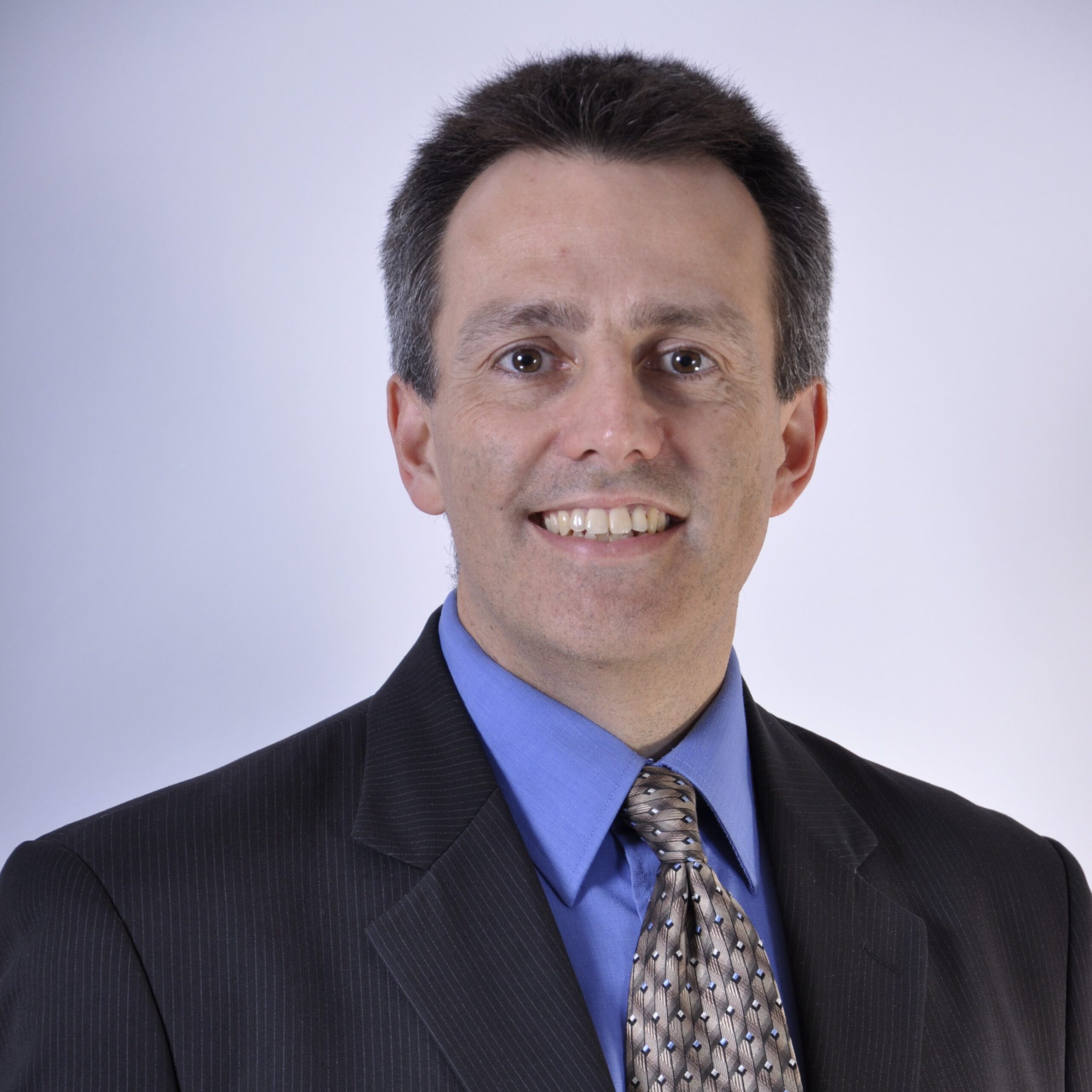
Guy de Carufel – Guest
Guy de Carufel is the Director of Engineering and Operations at Brais, Malouin et Associes Inc. Having graduated in mechanical engineering from Polytechnique Montréal, Mr. de Carufel also holds a Master’s degree in mechanical engineering, specializing in energy, from Polytechnique Montréal.
After beginning his career at the Atomic Energy Control Board as a reactor safety specialist, he occupied several positions in the telecommunications field, ranging from programmer-analyst to product manager.
Take a listen to the previous episode of the Engineer Innovation Podcast. Series 2, Episode 1: Exploring Massive Engineering Data Analytics.
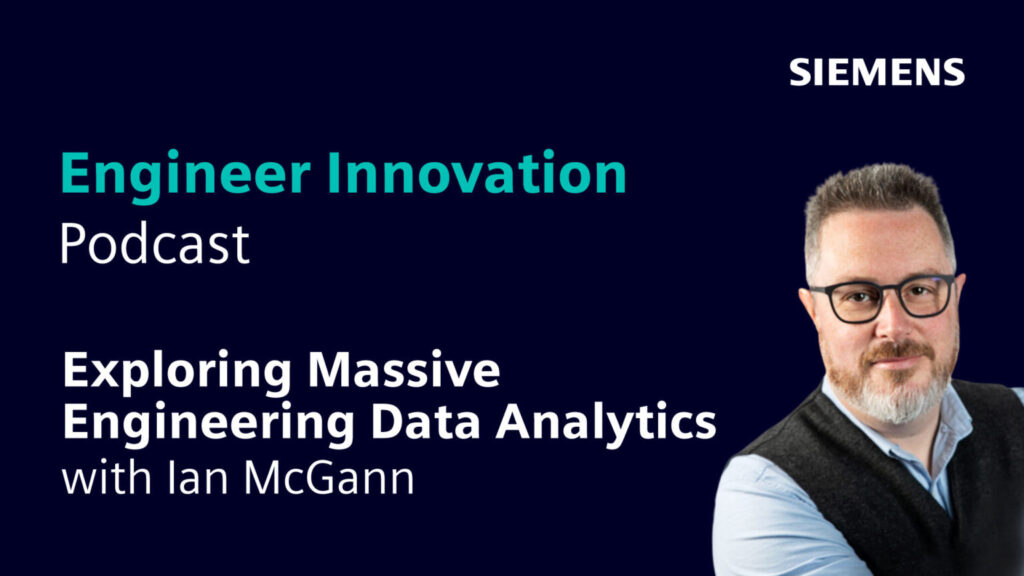
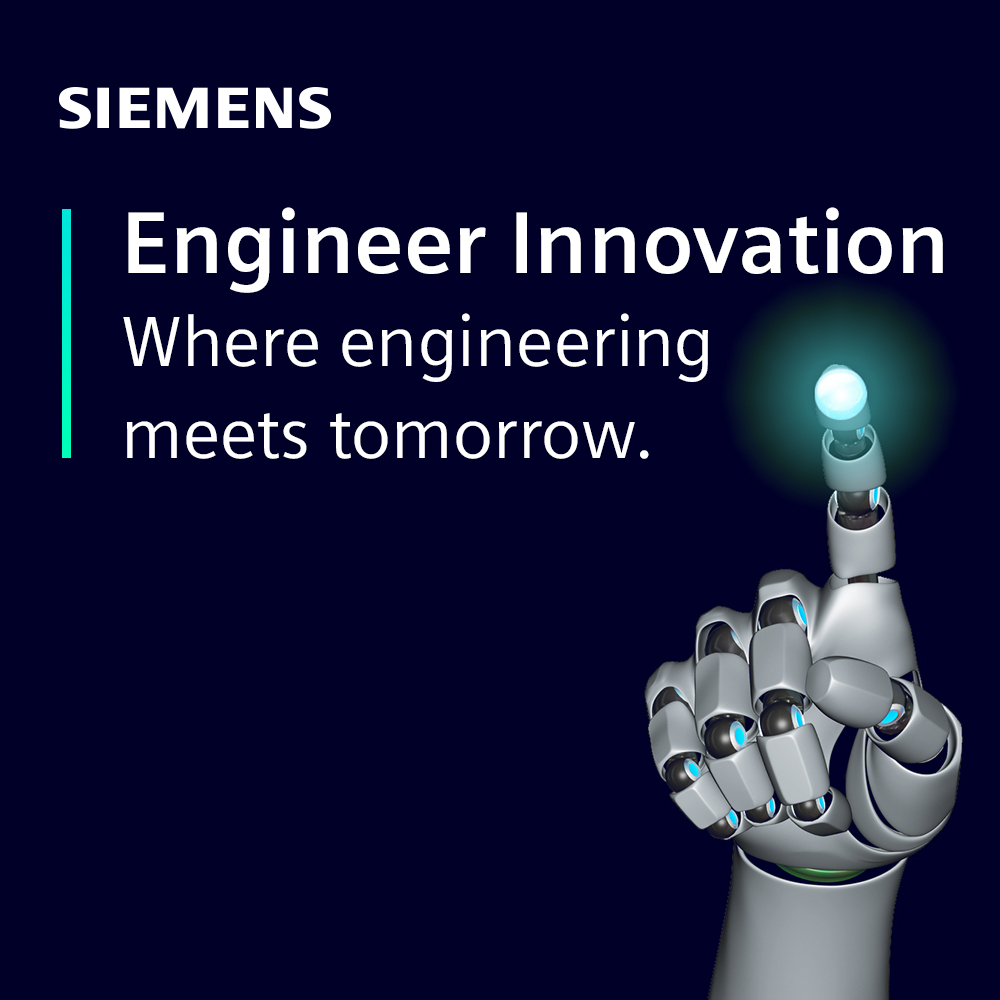
Engineer Innovation Podcast
A podcast series for engineers by engineers, Engineer Innovation focuses on how simulation and testing can help you drive innovation into your products and deliver the products of tomorrow, today.
